Nontoxic Underwater Adhesive Could Bring New Surgical Glue

Nontoxic underwater adhesive could bring new surgical glue
A nontoxic glue modeled after adhesive proteins produced by mussels and other creatures has been found to out-perform commercially available products, pointing toward potential surgical glues to replace sutures and staples.
More than 230 million major surgeries are performed worldwide each year, and over 12 million traumatic wounds are treated in the United States alone. About 60 percent of these wounds are closed using mechanical methods such as sutures and staples.
“Sutures and staples have several disadvantages relative to adhesives, including patient discomfort, higher risk of infection and the inherent damage to surrounding healthy tissue,” said Julie Liu, an associate professor of chemical engineering and biomedical engineering at Purdue University.
Most adhesives do not work well in moist environments because water interferes with the adhesion process. While developing adhesives that overcome this problem is challenging, glues for medical applications must meet an additional requirement: they must be nontoxic and biocompatible, as well.
Read more.
More Posts from T-sci-eng and Others

How did the Greeks know ?
Greeks had a strong geometric approach towards problems and as a result their methods are very intuitive.
In this post, we will look at the Method of exhaustion formulated by Archimedes that stands out as a milestone in the history of mathematics
Method of Exhaustion - Archimedes

Source
In order to find the bounds of pi, Archimedes came up with a remarkably elegant ‘algorithm’, which is as follows:
Lower bound
Inscribe a n-sided polygon in a circle —> Measure its perimeter(p) —> Measure its diameter(d) —> pi_min = p/d —-> Repeat with n+1 sides.
Upper bound
Circumscribe a n-sided polygon in a circle —> Measure its perimeter(p) —> Measure its diameter(d) —> pi_max = p/d —-> Repeat with n+1 sides.
And by following this procedure one could obtain the upper and lower bounds of pi !
Heres an animation made on geogebra for a circle of diameter 1. Watch how the lower and upper bounds vary.

Archimedes did this for a 96 sided polygon and found the value of pi to be between 3.14103 and 3.1427. This is a good enough approximation for most of the calculations that we do even today!

Happy Holidays !






Okay, I’ve really missed talking about teratology.
These dogs have polydactyl, but what’s interesting is that the extra dew claws can move independently of one another and grip things. They’re only found on the hind feet giving the dogs a distinctly velociraptor look
The Beauceron is an ancient breed, and no one has a definitive answer of why they have these, but the prevailing theory is that they were bred to do a lot of rock climbing because they were used for herding and hunting over rocky mountainous terrain.
Other places to see my posts: INSTAGRAM / FACEBOOK / ETSY / KICKSTARTER
It’s International Asteroid Day!
There are more than 700,000 known asteroids, but how much do you know about these rocky remnants left over from the birth of our solar system 4.6 billion years ago?

Today, June 30 is International Asteroid Day. Here are some things to know about our fascinating space rubble.
1. A Place in Space
Asteroids—named by British astronomer William Herschel from the Greek expression meaning “star-like"—are rocky, airless worlds that are too small to be called planets. But what they might lack in size they certainly make up for in number: An estimated 1.1 to 1.9 million asteroids larger than 1 kilometer are in the Main Belt between the orbits of Mars and Jupiter. And there are millions more that are smaller in size. Asteroids range in size from Vesta—the largest at about 329 miles (529 kilometers) wide—to bodies that are just a few feet across.

2. What Lies Beneath
Asteroids are generally categorized into three types: carbon-rich, silicate, or metallic, or some combination of the three. Why the different types? It all comes down to how far from the sun they formed. Some experienced high temperatures and partly melted, with iron sinking to the center and volcanic lava forced to the surface. The asteroid Vesta is one example we know of today.
3. Small Overall
If all of the asteroids were combined into a ball, they would still be much smaller than the Earth’s moon.
4. Except for a Big One
In 1801, Giuseppe Piazzi discovered the first and then-largest asteroid, Ceres, orbiting between Mars and Jupiter. Ceres is so large that it encompasses about one-fourth of the estimated total mass of all the asteroids in the asteroid belt. In 2006, its classification changed from asteroid to as a dwarf planet.

5. Mission to a Metal World
NASA’s Psyche mission will launch in 2022 to explore an all-metal asteroid—what could be the core of an early planet—for the very first time. And in October 2021, the Lucy mission will be the first to visit Jupiter’s swarms of Trojan asteroids.

6. Near-Earth Asteroids
The term ‘near’ in near-Earth asteroid is actually a misnomer; most of these bodies do not come close to Earth at all. By definition, a near-Earth asteroid is an asteroid that comes within 28 million miles (44 million km) of Earth’s orbit. As of June 19, 2017, there are 16,209 known near-Earth asteroids, with 1,803 classified as potentially hazardous asteroids (those that could someday pose a threat to Earth).
7. Comin’ in Hot
About once a year, a car-sized asteroid hits Earth’s atmosphere, creates an impressive fireball, and burns up before reaching the surface.
8. But We’re Keeping an Eye Out
Ground-based observatories and facilities such as Pan-STARRS, the Catalina Sky Survey, and ATLAS are constantly on the hunt to detect near-Earth asteroids. NASA also has a small infrared observatory in orbit about the Earth: NEOWISE. In addition to detecting asteroids and comets, NEOWISE also characterizes these small bodies.

9. Buddy System
Roughly one-sixth of the asteroid population have a small companion moon (some even have two moons). The first discovery of an asteroid-moon system was of asteroid Ida and its moon Dactyl in 1993.
10. Earthly Visitors

Several NASA space missions have flown to and observed asteroids. The NEAR Shoemaker mission landed on asteroid Eros in 2001 and NASA’s Dawn mission was the first mission to orbit an asteroid in 2011. In 2005, the Japanese spacecraft Hayabusa landed on asteroid Itokawa. Currently, NASA’s OSIRIS-REx is en route to a near-Earth asteroid called Bennu; it will bring a small sample back to Earth for study.
Make sure to follow us on Tumblr for your regular dose of space: http://nasa.tumblr.com
These giant mesh nets provide drinking water in the driest desert on Earth.
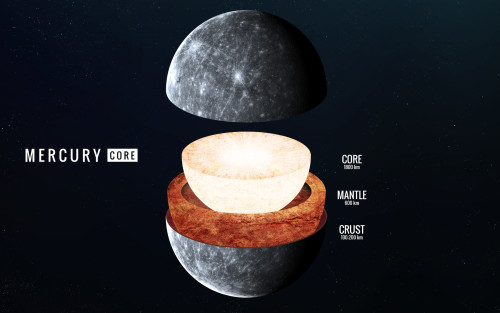
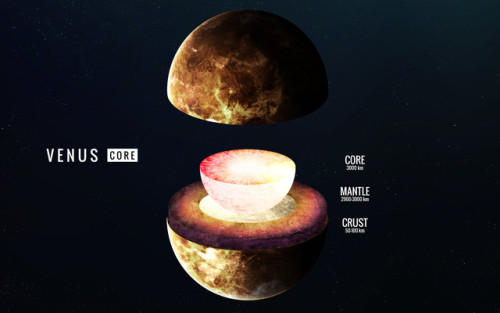

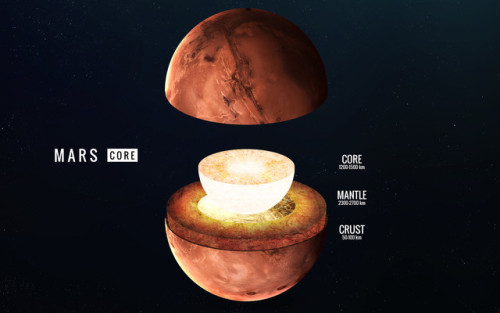
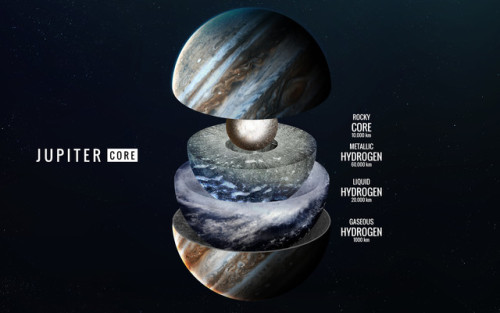
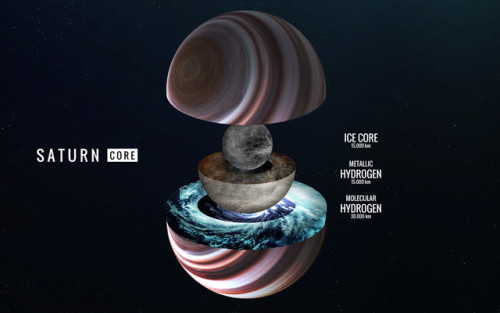
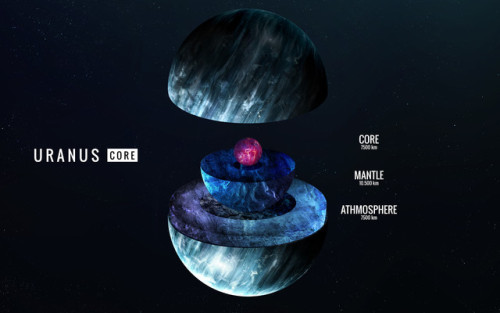
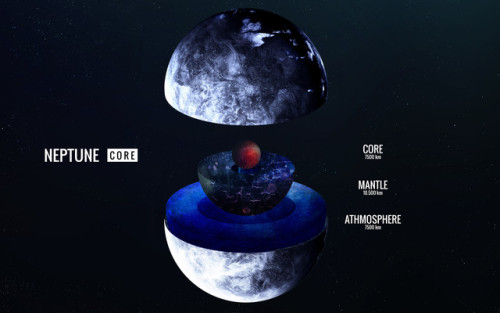
Inside - Vadim Sadovski

Here’s every total solar eclipse happening in your lifetime. Is this year your best chance?
On Aug. 21, a total solar eclipse will be visible from the continental United States. It’ll be the first to traverse coast to coast in nearly a century. Learn more about past and future eclipses: See full graphic.



Alloys: 300 series Stainless Steel
When chromium is added to steel in sufficient amounts, it reacts with oxygen on the surface of the metal, creating a thin transparent layer that prevents further oxidation such as rusting. The layer is even self-healing, when damaged by scratches or wear. Steels that have over ten percent chromium added are classified as stainless steels, with high strength and toughness, in addition to the corrosion resistance - and there are hundreds of varieties of stainless steel.
As such, these alloys are divided into types, or series, often defined by their compositions or the methods of forming and working them. The 300 series of stainless steels are austenitic stainless steels, with an austenitic or face-centered cubic crystal structure. They contain anywhere from about 15-30% chromium, as well as up to about 20% nickel and other elements such as molybdenum. The nickel stabilizes the austenitic structure and increases ductility as well as high temperature strength and corrosion resistance.
The 300 series alloys are non-magnetic in the annealed condition, though they can become slightly magnetic when cold worked, depending on the nickel content. Comparatively, these steels have high ductility, low yield stress, and high tensile strengths.
Commonly used 300 series stainless steels include 301, 302, 304, and 316, as well as the low carbon variations of these types, designated with an L, such as 316L. 304 stainless steel is also often called 18/8 stainless steel, given that it has 18% Cr and 8% Ni, or A2 stainless. The 316 grade is also know as A4, or marine grade stainless.
In the photos above, the Gateway Arch in St. Louis is clad in type 304 SS, while the Chrysler Building in New York is clad with Nirosta stainless steel, a form of type 302.
Sources: ( 1 ) ( 2 ) ( 3 ) ( 4 - images 1 and 2 ) ( 5 - image 3 )
What is glass?
When most people think of glass, their mind probably jumps straight to windows. And perhaps they’ve heard that old myth - that glass is actually a liquid, not a solid.
So what is glass?
Well, you’ve probably seen something like this before:

The three common phases of matter - gas, liquid, and solid. But you’ll notice that the solid picture is labeled crystalline state. Most people consider glass to be a solid, but it doesn’t quite look like that.
Crystals have a well defined structure, exhibiting long-range order. Glass is what’s called an amorphous material, exhibiting only short-range order.
Basically, glass is a different kind of solid:

The quartz shown above is an example of a crystalline material. The molecules of glass on the other hand are disordered - yet still solid.
To create glass, the liquid melt has to be cooled fast enough to prevent the substance from crystallizing. This fast cooling locks the atoms or molecules in the disordered state that looks like the liquid phase.
Characterizing a substance as a glass also means that this glass transition is reversible.
While most glass is optically transparent, the properties depend on the composition of the glass. Most of what you see every day is soda-lime-silicate glass, but there are many different kinds of glasses, including sodium borosilicate glass (Pyrex), lead-oxide glass, and aluminosilicate glass.
Sources: x x

Superstretchable, supercompressible supercapacitors
Flexible, wearable electronics require equally flexible, wearable power sources. In the journal Angewandte Chemie, Chinese scientists have introduced an extraordinarily stretchable and compressible polyelectrolyte which, in combination with carbon nanotube composite paper electrodes, forms a supercapacitor that can be stretched to 1000 percent in length and compressed to 50 percent in thickness with even gaining, not losing capacity.
Supercapacitors bridge the gap between batteries, which are merely energy-storing devices, and normal capacitors, which release and take up electric energy very quickly but cannot store so much energy. With their ability to charge and release large amounts of electric power in a very short time, supercapacitors are preferably used in regenerative braking, as power buffers in wind turbines, and, increasingly, in consumer electronics such as laptop computers and digital cameras. To make supercapacitors fit for future electrics demands like, for example, wearables and paper electronics, Chunyi Zhi from the City University of Hong Kong and his colleagues are searching for ways to endow them with mechanical flexibility. It can be achieved with a new electrolyte material: they developed a polyelectrolyte that can be stretched more than 10 times its length and compressed to half its thickness retaining full functionality, without breakage, cracking, or other damage to its material.
Read more.
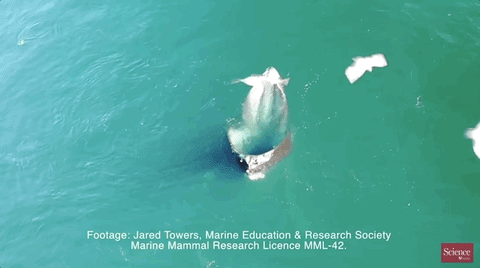
apparently one whale years ago was observed doing this for hours and now more and more whales in the area are seen copying it so we think it’s a whole new behavior and it seems to be a response to shrinking food sources.
Instead of expending any energy actively hunting, the whale just holds its mouth open wherever fish are being hunted by birds. To escape the birds, the fish try to hide in the whale’s mouth because it’s a darker area that looks like shelter. …They’re turning into giant, sea-mammal pitcher plants.
https://onlinelibrary.wiley.com/doi/epdf/10.1111/mms.12557?referrer_access_token=bXLTS5BeSw_vlIKHkM0bYIta6bR2k8jH0KrdpFOxC654HjreJ8D19K86UreR5JPsSRb0CuGhiJSV1L1ht-N1Gf_K_1a9MREFzQGU9oJDNctsKDin_HXcYEdsLg3EbcTl
-
 lasbifnebuttu-blog liked this · 7 years ago
lasbifnebuttu-blog liked this · 7 years ago -
 littlesoybean reblogged this · 7 years ago
littlesoybean reblogged this · 7 years ago -
 urbanoceanix reblogged this · 7 years ago
urbanoceanix reblogged this · 7 years ago -
 thenanoscientist-blog reblogged this · 7 years ago
thenanoscientist-blog reblogged this · 7 years ago -
 liobits reblogged this · 7 years ago
liobits reblogged this · 7 years ago -
 devourer-of-acetone reblogged this · 7 years ago
devourer-of-acetone reblogged this · 7 years ago -
 rumo99 liked this · 7 years ago
rumo99 liked this · 7 years ago -
 t-sci-eng reblogged this · 7 years ago
t-sci-eng reblogged this · 7 years ago -
 rjs111-blog1 reblogged this · 7 years ago
rjs111-blog1 reblogged this · 7 years ago -
 portalperson reblogged this · 7 years ago
portalperson reblogged this · 7 years ago -
 portalperson liked this · 7 years ago
portalperson liked this · 7 years ago -
 sciencenerd4-blog liked this · 7 years ago
sciencenerd4-blog liked this · 7 years ago -
 nadnaravnacajanka liked this · 7 years ago
nadnaravnacajanka liked this · 7 years ago -
 abeautifulmindexposed reblogged this · 7 years ago
abeautifulmindexposed reblogged this · 7 years ago -
 abeautifulmindexposed liked this · 7 years ago
abeautifulmindexposed liked this · 7 years ago -
 stem-girls-unite reblogged this · 7 years ago
stem-girls-unite reblogged this · 7 years ago -
 altenu liked this · 7 years ago
altenu liked this · 7 years ago -
 materialsscienceandengineering reblogged this · 7 years ago
materialsscienceandengineering reblogged this · 7 years ago